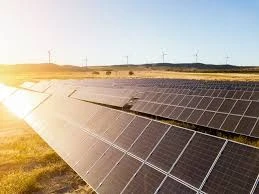solar panels on steep roof
The Benefits and Challenges of Installing Solar Panels on Steep Roofs
As the world shifts towards renewable energy, solar power has emerged as a dominant player in the quest for sustainable solutions. One innovative application of this technology is the installation of solar panels on steep roofs. While this approach offers numerous benefits, it also comes with its own set of challenges. In this article, we will explore the advantages and potential drawbacks of placing solar panels on steep roofs.
Advantages of Solar Panels on Steep Roofs
1. Maximized Sunlight Exposure One of the primary benefits of installing solar panels on steep roofs is the increased exposure to sunlight. Steeper angles can enhance the efficiency of solar panels by allowing them to absorb more direct sunlight throughout the day. This can lead to higher energy generation levels compared to panels installed on flat roofs or those with a lesser incline.
2. Space Optimization Steep roofs are often less cluttered with obstructions such as trees or taller buildings, which can create shading issues on flats. By harnessing these steep surfaces, homeowners can make better use of limited roof space. This is especially critical in urban areas where horizontal space can be at a premium.
3. Aesthetic Appeal Solar panels on steep roofs can be visually appealing. The panels can be integrated into the roofing material, providing a sleek and modern look without the bulk associated with ground-mounted solar arrays. Moreover, many manufacturers offer solar shingles that blend seamlessly with traditional roofing materials, enhancing the overall aesthetics of the home.
4. Increased Durability Steep roofs are often designed to shed water and debris more effectively than flat roofs. This characteristic can lead to prolonged lifespan and reduced maintenance for solar panels. The natural runoff ensures that dirt and moisture do not accumulate, which can optimize the panel’s performance.
Challenges of Solar Panels on Steep Roofs
solar panels on steep roof

1. Installation Difficulties Installing solar panels on steep roofs poses specific challenges and risks. The steep angle requires specialized equipment and skilled labor to ensure safety during installation. Additionally, safety measures, such as harnesses and scaffolding, can increase installation costs and complexity.
2. Higher Costs The technical challenges associated with steep roofs can lead to higher installation costs. Contractors may charge a premium for projects that require extra safety measures or specialized installation techniques. Homeowners must weigh these costs against the long-term energy savings that solar panels can provide.
3. Structural Considerations Not all roofs can support the additional weight of solar panels. Homeowners should consult structural engineers to ensure their roof can handle the load. In some cases, reinforcing the roof to accommodate solar panel installation can add considerable expenses to the project.
4. Potential for Glare Solar panels on steep roofs can create glare, particularly during certain times of the day. This may be a concern for neighbors or nearby drivers. To mitigate this, homeowners can choose panels with anti-reflective coatings and strategically position them to minimize glare's impact.
Conclusion
Installing solar panels on steep roofs offers a unique blend of benefits and challenges. The potential for increased sun exposure, aesthetic advantages, and optimized space utilization make steep roofs attractive options for solar energy generation. However, homeowners must also consider the installation complexity, associated costs, and structural limitations.
With careful planning and the right expertise, homeowners can successfully harness solar energy, transforming steep rooftops into sustainable power sources. As we move towards a greener future, the role of solar panels on steep roofs will undoubtedly continue to evolve, contributing to energy independence and environmental preservation. Ultimately, the decision to install solar panels should be based on a comprehensive assessment of both benefits and challenges, ensuring that each installation maximizes its potential while maintaining safety and integrity.
-
Navigating Off Grid Solar Inverter: From Use Cases to Trusted PartnersNewsAug.05,2025
-
Solar Edge String Inverter: A Wholesaler’s Guide to Inverter Technology SelectionNewsAug.05,2025
-
Microinverters: Revolutionizing Solar Energy UseNewsAug.05,2025
-
Future of Monocrystalline Solar Panel Efficiency: Latest Technological AdvancesNewsAug.05,2025
-
Solar Panels for House: A Complete Guide to Residential Solar EnergyNewsAug.05,2025
-
Panel Bifacial Performance in Snow and Low-Light ConditionsNewsAug.05,2025







